You searched for: 埃塞俄比亚facebook优化【TG飞机:@bapingseo】谷歌优化竞价推广靠谱【TG电报:@bapingseo】淘客平臺推廣【Telegram:@bapingseo】5524澳门24小时线路网址nba美国投注比例?20220707r1GHHo.html
<< Previous | Displaying results 151-200 of 210 for "埃塞俄比亚facebook优化【TG飞机:@bapingseo】谷歌优化竞价推广靠谱【TG电报:@bapingseo】淘客平臺推廣【Telegram:@bapingseo】5524澳门24小时线路网址nba美国投注比例?20220707r1GHHo.html" | Next >>
-
Elsa (Eliska) Skutezka Kulkova
ID CardElsa was the eldest of three children born to Jewish parents in Brno, the capital of Moravia, where her father ran a successful shipping company. In 1920 she graduated from a German-language secondary school. She married and moved to Bratislava, but the marriage was unsuccessful and Elsa returned to Brno in 1926, where she opened a millinery business. 1933-39: On May 24, 1933, Elsa married Robert Kulka and the couple settled in Robert's hometown of Olomouc. Their son, Tomas, was born a year and a day…
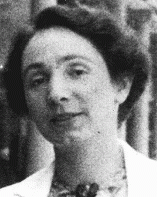
-
Karl Stojka
ID CardKarl was the fourth of six children born to Roman Catholic parents in the village of Wampersdorf in eastern Austria. The Stojkas belonged to a tribe of Roma ("Gypsies") called the Lowara Roma, who made their living as itinerant horse traders. They lived in a traveling family wagon, and spent winters in Austria's capital of Vienna. Karl's ancestors had lived in Austria for more than 200 years. 1933-39: Karl grew up used to freedom, travel and hard work. In March 1938 his family's wagon was parked for the…
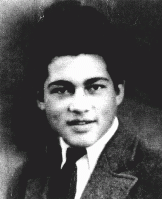
-
Gabrielle Weidner
ID CardGabrielle was the second of four children born to Dutch parents. Her father was a minister in the Seventh-Day Adventist Church. She grew up in Collonges, France, near the Swiss border, where her father served as a pastor. Gabrielle was baptized in the Seventh-Day Adventist faith at the age of 16. She attended secondary school in London, England. 1933-39: Gabrielle became increasingly active in the Seventh-Day Adventist Church, eventually becoming the secretary at the French-Belgian Union of Seventh-Day…

-
Yves Oppert
ID CardYves' mother died when he was 7, and he grew up in the home of his grandfather, who was the chief Ashkenazi rabbi of Paris. Yves became a successful businessman, owning a chain of department stores. He was an avid mountain climber and liked to play tennis and to race cars and motorcycles. As a young man, Yves did his military service in France's alpine corps. 1933-39: In 1934 Yves married Paulette Weill, and the couple had two daughters, Nadine in 1935 and Francelyn in 1939. He was called up by the French…

-
Michael von Hoppen Waldhorn
ID CardMichael was born in a village in the southeastern part of Galicia, an Austrian province before it became a part of Poland in 1918. Raised by Jewish parents, Michael served as an officer in the Austro-Hungarian army until the end of World War I. After the war, Michael and his Hungarian-Jewish wife settled in Paris, where he became known as Michel. They raised three children there. 1933-39: Michael's family was better off in Paris than they had been in eastern Europe. In Paris, Michael was a successful…

-
Johann (Hansi) Stojka
ID CardHansi, as he was called by family and friends, was the third of six children born to Roma ("Gypsy") parents who were Roman Catholic. The family wagon traveled with a caravan that spent winters in Vienna, Austria's capital, and summers in the Austrian countryside. The Stojkas belonged to a tribe called the Lowara Roma, who made their living as itinerant horse traders. 1933-39: Hansi grew up used to freedom, travel and hard work. He was 9 years old and their wagon was parked for the winter in a Vienna…

-
Franz Wohlfahrt
ID CardThe eldest of six children born to Catholic parents, Franz was raised in a village in the part of Austria known as Carinthia. His father was a farmer and quarryman. Disillusioned with Catholicism, his parents became Jehovah's Witnesses during Franz's childhood and raised their children in their new faith. As a teenager, Franz was interested in painting and skiing. 1933-39: Franz was apprenticed to be a house painter and decorator. After Nazi Germany annexed Austria in 1938, like other Jehovah's…
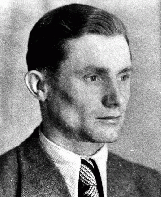
-
Hilde Verdoner-Sluizer
ID CardHilde was raised in a middle-class Jewish family in Amsterdam. Like many of the Netherlands's Jews, Hilde's family was well-integrated in Dutch society. Hilde excelled in high school, especially in languages. After graduation, she studied homemaking for two years, and then took a job as a secretary in Rome. Hilde returned to Amsterdam where, at 24, she married Gerrit Verdoner in December 1933. 1933-39: After their wedding, Hilde and Gerrit moved to Hilversum, a residential town in the heart of the…
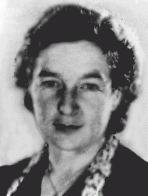
-
Children's art: Handmade comic book "To Alice from Ervin Bogner"
ArtifactAlice Goldberger (1897-1986) was born in Berlin, Germany. Trained as a youth-work instructor, she ran a shelter for disadvantaged children and their families. When Hitler came to power, Alice, who was Jewish, had to give up her post. She immigrated to England in 1939. When war broke out, Alice was interned on the Isle of Man as an enemy alien. While there, she organized a children's facility. Hearing of Alice's work in the camp, psychoanalyst Anna Freud (daughter of Sigmund Freud) intervened to secure…
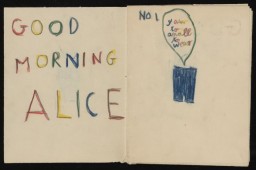
-
Children's art: Lingfield House diary
ArtifactAlice Goldberger (1897-1986) was born in Berlin, Germany. Trained as a youth-work instructor, she ran a shelter for disadvantaged children and their families. When Hitler came to power, Alice, who was Jewish, had to give up her post. She immigrated to England in 1939. When war broke out, Alice was interned on the Isle of Man as an enemy alien. While there, she organized a children's facility. Hearing of Alice's work in the camp, psychoanalyst Anna Freud (daughter of Sigmund Freud) intervened to secure…

-
Children's art: "Lav Fritz," handmade pamphlet of drawings by Fritz Friedmann
ArtifactAlice Goldberger (1897-1986) was born in Berlin, Germany. Trained as a youth-work instructor, she ran a shelter for disadvantaged children and their families. When Hitler came to power, Alice, who was Jewish, had to give up her post. She immigrated to England in 1939. When war broke out, Alice was interned on the Isle of Man as an enemy alien. While there, she organized a children's facility. Hearing of Alice's work in the camp, psychoanalyst Anna Freud (daughter of Sigmund Freud) intervened to secure…
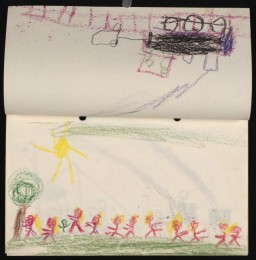
-
Bruno Klein
ID CardBruno was the youngest of six children born to Jewish parents in the city of Osijek in eastern Croatia when it was still part of the Austro-Hungarian Empire. He attended elementary school in Osijek and then completed his secondary schooling in Poega, a Croatian town where his parents had moved in 1923. In 1932 the Klein family moved to Zagreb, the capital of Croatia. 1933-39: While living with his parents in Zagreb, Bruno attended medical school until 1938, when he graduated. He specialized in internal…
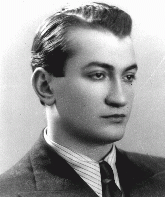
-
Bernard (Green) Greenspan
ID CardBernard was one of five children born to a Jewish family in the southern Polish town of Rozwadow. His father, a World War I veteran incapacitated as a result of the war, supported his family on his military pension. In the early 1930s Bernard completed high school and worked on the family farm. 1933-39: In 1934 Bernard was recruited into the Polish army and stationed in Lvov, where he ran a canteen. After three years there he returned to his family's farm outside Rozwadow to work. On September 24, 1939,…
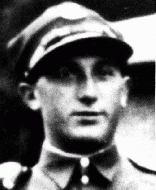
-
Frieda Greinegger
ID CardFrieda was the fourth of five children born to strict Catholic parents. She had one brother and three sisters. Frieda grew up on a large farm near the village of Michaelnbach in northern Austria. The farm had cattle, horses, pigs and poultry, and the children worked long hours helping their parents on the farm. At age 12, Frieda left school to work full time on the farm. 1933-39: Germany annexed Austria in March 1938. When war broke out in September 1939, Frieda's brother was drafted into the German army.…
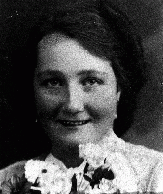
-
Welwel Wainkranc
ID CardThe third of five brothers, Welwel was born to Jewish parents who lived 35 miles east of Warsaw in the small predominantly Jewish town of Kaluszyn. His father was a cattle merchant who purchased cows and sold the meat to butchers in the Warsaw region. Welwel spent most of his free time with a group of Jewish friends who lived in his neighborhood and who attended the same public school. 1933-39: Every summer evening Welwel, Abram Kisielnicki, and some other pals, like to stroll along Kaluszyn's main…

-
Léon Degrelle
ArticleLéon Degrelle was an extreme right-wing Belgian politician and Nazi collaborator. After the war, he continued to spread pro-Nazi propaganda for decades. Learn more.
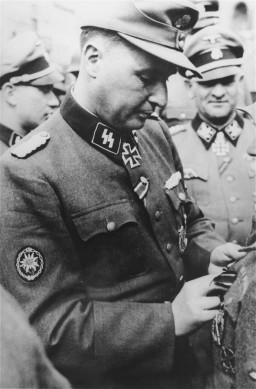
-
Mass Shootings at Babyn Yar (Babi Yar)
ArticleAt Babyn Yar in late September 1941, SS and German police units and their auxiliaries perpetrated one of the largest massacres of World War II.

-
Reichstag fire trial
FilmOn the night of February 27, 1933, an unemployed Dutch construction worker named Marinus van der Lubbe set fire to the Reichstag (German parliament) building, causing serious damage. The Nazis blamed the Communists for the fire and claimed emergency powers to crush all opposition. Bolstering Nazi claims, the police also arrested three Bulgarian members of the Communist International, who were in Germany at the time, and a leading German Communist. Despite Nazi claims, however, responsibility for the fire…
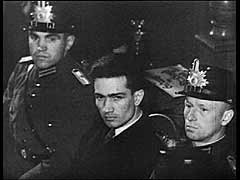
-
John Woodruff describes winning an Olympic medal
Oral HistoryIn 1936, John Woodruff was one of 18 African Americans on the US Olympic team competing in Berlin. He won the gold medal for the men's 800-meter race. In this clip he describes his feelings upon winning the medal. Interview date: May 15, 1996
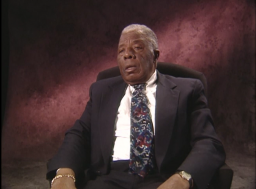
-
Hainewalde
ArticleThe SA established a protective custody camp at Hainewalde in March 1933. Well-known journalist and writer Axel Eggebrecht was among its early prisoners.
-
Stephen S. Wise
ArticleStephen Wise (1874–1949) was a prominent Jewish leader in the United States between 1933-1945. Learn more about his work during the Holocaust.

-
SS and the Holocaust
ArticleLearn more about the SS and the organization’s involvement in perpetrating the Holocaust.
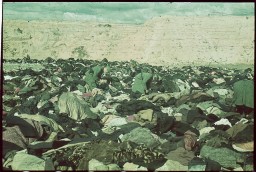
-

-
Theresienstadt: Concentration/Transit Camp for German and Austrian Jews
ArticleLearn about the role of Theresienstadt in the deportation of German and Austrian Jews to killing sites and killing centers in the east.

-
Adolf Hitler: 1919-1924
ArticleAdolf Hitler established himself as absolute Führer, or leader, of the Nazi Party by 1921. Learn more about Hitler in the years 1919-1924.

-
Kovno
ArticleKovno had a rich and varied Jewish culture. Learn about the Soviet and German occupations of Kovno, ghettoization, secret archives, and resistance in Kovno during WWII and the Holocaust.

-
The German Churches and the Nazi State
ArticleHow did Christians and their churches in Germany respond to the Nazi regime and its laws, particularly to the persecution of the Jews? Learn more.

-
Law, Justice, and the Holocaust
ArticleLearn about the role of the legal profession as the Nazi leadership gradually moved Germany from a democracy to a dictatorship.

-
Ardeatine Caves Massacre
ArticleNow a national memorial site, the Ardeatine Caves outside Rome were the site of a German reprisal for a bombing by Italian resistance operatives in March 1944.
-
Immigration to the United States 1933–41
ArticlePotential immigrants to the US from Nazi-occupied territory faced many obstacles, including restrictive quotas and complicated requirements for obtaining visas.
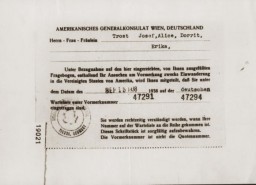
-
Sobibor: Key Dates
ArticleExplore a timeline of key events in the history of the Sobibor killing center in the General Government, the German-administered territory of occupied Poland.

-
The Harrison Report
ArticleThe Harrison Report criticized conditions in the DP camps, called for changes in the treatment of Jewish DPs, and recommended allowing them to emigrate to the US and Palestine.

-
Berlin-Marzahn (camp for Roma)
ArticleThe Berlin-Marzahn camp was established a few miles from Berlin's city center, for the detention of Roma, on the eve of the 1936 summer Olympics.

-
Gleichschaltung: Coordinating the Nazi State
ArticleGleichschaltung is the German term applied to the Nazification of all aspects of German society following the Nazi rise to power in 1933.
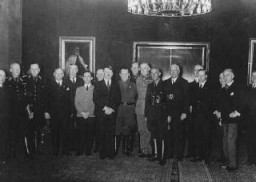
-
Fascism
ArticleFascism is a far-right authoritarian political philosophy. Learn about the history and principles of fascism and its implementation in Nazi Germany.

-
Article 48
ArticleArticle 48 allowed the German president to declare a state of emergency in times of national danger and effectively to rule as a dictator for short periods. Learn about its far-reaching effects.
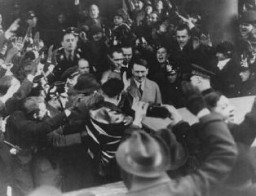
-
Hitler Comes to Power
ArticleHitler rose to power during a time of economic and political instability in Germany. Learn more about how and when Hitler came to power.

-
The Armenian Genocide (1915-16): In Depth
ArticleLearn more about the Armenian Genocide, which was the physical annihilation of ethnic Armenian Christians living in the Ottoman Empire between 1915-1916.
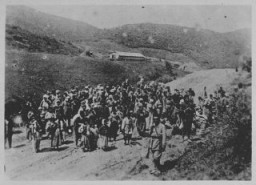
-
The United States and the Refugee Crisis, 1938–41
ArticleNazi Germany’s territorial expansion and the radicalization of Nazi anti-Jewish policies triggered a mass exodus. Learn about the US and the refugee crisis of 1938–41.
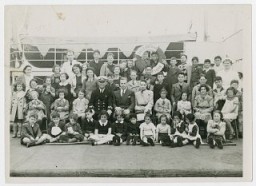
-
Ruth Berkowicz Segal describes journey to and arrival in Japan
Oral HistoryWhen German forces invaded Poland in September 1939, Ruth's father fled to eastern Poland. Upon the Soviet occupation of eastern Poland, he fled to Lithuania. Ruth left Warsaw with two friends to find her father and later joined him in Vilna. After Soviet forces occupied Lithuania, Ruth and her father obtained transit visas for Japan, but only Ruth obtained a Soviet exit visa. Her father insisted she leave and not wait for him. Ruth traveled by the Trans-Siberian Railroad across the Soviet Union to…
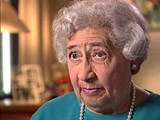
-
Belle Mayer Zeck describes difficult working conditions during the Nuremberg trials
Oral HistoryBelle Mayer trained as a lawyer and worked for the General Counsel of the US Treasury, Foreign Funds Control Bureau. This bureau worked to enforce the Trading With the Enemy Act passed by Congress. In this capacity, Mayer became familiar with the German I. G. Farben chemical company, a large conglomerate that used forced labor during World War II. In 1945, Mayer was sent as a Department of Treasury representative to the postwar London Conference. She was present as representatives from the Allied nations…
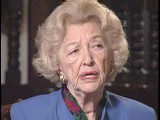
-
Lublin/Majdanek Concentration Camp: Conditions
ArticleIn 1940, the Nazis established Lublin (Majdanek) concentration camp in Lublin, Poland. Learn more about camp conditions.
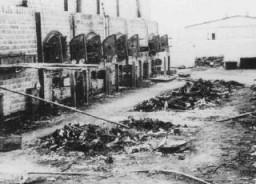
-
Incitement to Genocide in International Law
ArticleAfter the Holocaust, the IMT charged the first case of “incitement to genocide.” Learn more about the crime and its application in modern genocide law.
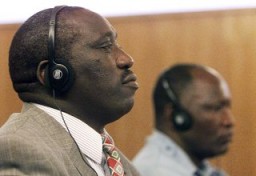
-
Flossenbürg
ArticleLearn about the Flossenbürg camp from its establishment until liberation in April 1945, including conditions, forced labor, subcamps, and death marches.

-
Sobibor
ArticleTo carry out the mass murder of Europe's Jews, the Nazis established killing centers that used assembly-line methods of murder. Sobibor was among these facilities.

-
Mannschafts-Stammlager (Stalag) IX B
ArticleIn 1939, the Nazis established the Mannschafts-Stammlager (Stalag) IX B camp in Germany. Learn more about the camp’s history, prisoners, and liberation.
-
Wagner-Rogers Bill
ArticleThe Wagner-Rogers Bill proposed admitting 20,000 refugee children to the US from the Greater German Reich in 1939–40, but did not become law. Learn more

-
Lidice: The Annihilation of a Czech Town
ArticleGerman forces razed the town of Lidice in June 1942 in retaliation for the death of Nazi leader Reinhard Heydrich. Learn about the assassination and reprisal.

-
The Syrets Labor Education Camp
ArticleSyrets was a labor education camp established by the Germans outside of Kyiv. Learn more about Syrets prisoners and their daily life in the camp.
-
The Krakow (Cracow) Ghetto during the Holocaust
ArticleThe Krakow ghetto in German-occupied Poland held over 15,000 Jews. Learn more about Krakow and the ghetto’s history during the Holocaust and WWII.

